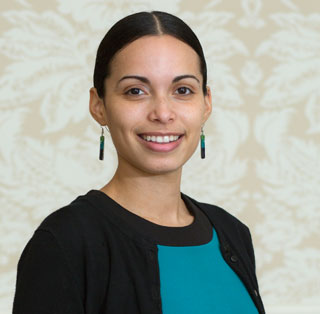
Fellowship: Planning Office for Urban Affairs
Graduate School: MIT
Post Fellowship: Amarillys remained at the Planning Office post-Fellowship.
LinkedIn Profile>>
Fellow Profile
Please tell us a little about your background and what drove you to be a Kuehn Fellow.
My own family has felt the emotional and financial stress, including close brushes with homelessness, caused by poverty and the lack of affordable housing. These experiences and others shaped my interest in social justice and public service careers, leading me to earn my B.A. in public policy analysis from Pomona College and working around the country on a range of issues, including immigration reform, vocational education, youth development, raising the minimum wage, and paid family and medical leave. It was during graduate school that I began to appreciate more clearly the power that developers have in shaping communities, and thus laying the foundation, for better or worse, for many of the issues I had worked on previously. I felt the Kuehn Fellowship was an excellent opportunity to learn about development through hands-on experience on meaningful projects, allowing me to enter a field I may never have entered otherwise.
Favorite project/accomplishment/learning?
My favorite project so far has been The Union at 48 Boylston Street, a joint project with St. Francis House, the largest day shelter in Massachusetts, which also provides an array of supportive services including medical care, addiction and mental health counseling, and life skills training. All 46 units will be affordable to households making less than 30-60% AMI, and of these, 26 units will be reserved for individuals and households currently experiencing homelessness. In addition, St. Francis House will be moving its administrative offices into the building, freeing up space for more programming at their location across the street, and will operate two businesses in the commercial spaces that will provide employment and training opportunities for their clients. This project will help fight homelessness in Boston and maintain affordable housing options in a rapidly gentrifying area of the city while maintaining a beautiful historic building. This project is special, and I’m proud to be a part of it.
What has surprised/challenged you?
Perhaps the thing that has surprised me most is how much development is an iterative process and how much developers are flying by the seat of their pants. I think I had a vision of developers as being more direct drivers of development than they are. Of course, developers need to have a vision and mission to guide their work on a particular site and overall, but developers rely heavily on the expertise of the team members they work with and educated guesses based on prior experience, and much of development is responding to changing circumstances and new information rather than directing how things unfold. While developers still have a lot of power and influence, I see them now more as key points in a network where the impact of policy and investment decisions on communities is more easily manifested and observed, and the information from those interactions and changes is funneled back out to the network…A challenge has been realizing how little diversity there is in the field compared to the populations we serve.

